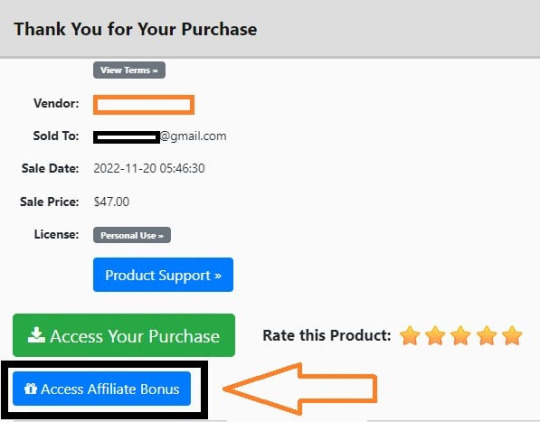#create an affiliate website with wordpress
Explore tagged Tumblr posts
Text
Automattic, the company that owns WordPress.com, is required to remove a controversial login checkbox from WordPress.org and let WP Engine back into its ecosystem after a judge granted WP Engine a preliminary injunction in its ongoing lawsuit. In addition to removing the checkbox—which requires users to denounce WP Engine before proceeding—the preliminary injunction orders that Automattic is enjoined from “blocking, disabling, or interfering with WP Engine’s and/or its employees’, users’, customers’, or partners’ access to wordpress.org” or “interfering with WP Engine’s control over, or access to, plugins or extensions (and their respective directory listings) hosted on wordpress.org that were developed, published, or maintained by WP Engine,” the order states. In the immediate aftermath of the decision, Automattic founder and CEO Matt Mullenweg asked for his account to be deleted from the Post Status Slack, which is a popular community for businesses and people who work on WordPress’s open-source tools.
“It's hard to imagine wanting to continue to working on WordPress after this,” he wrote in that Slack, according to a screenshot viewed by 404 Media. “I'm sick and disgusted to be legally compelled to provide free labor to an organization as parasitic and exploitive as WP Engine. I hope you all get what you and WP Engine wanted.�� His username on that Slack has been changed to “gone 💀” Mullenweg began to publicly denounce WP Engine in September, calling the web hosting platform a “cancer” to the larger Wordpress open-source project and accusing it of improperly using the WordPress brand. He’s “at war” with WP Engine, in his own words. In October, Mullenweg added a required checkbox at login for WordPres.org, forcing users to agree that they are not affiliated with WP Engine. The checkbox asked users to confirm, “I am not affiliated with WP Engine in any way, financially or otherwise.” The checkbox was still present and required on the WordPress.org login page as of Wednesday morning. Automattic and Mullenweg have 72 hours from the order to take it down, according to the judge’s order. WP Engine sent a cease and desist demanding that he “stop making and retract false, harmful and disparaging statements against WP Engine,” the platform posted on X. Automattic sent back its own cease and desist, saying, “Your unauthorized use of our Client’s intellectual property has enabled WP Engine to compete with our Client unfairly, and has led to unjust enrichment and undue profits.” WP Engine filed a lawsuit against Automattic and Mullenweg, accusing them of extortion and abuse of power. In October, Mullenweg announced that he’d given Automattic employees a buyout package, and 159 employees, or roughly 8.4 percent of staff, took the offer. “I feel much lighter,” he wrote. But shortly after, he reportedly complained that the company was now “very short staffed.” All of this has created an environment of chaos and fear within Automattic and in the wider WordPress open-source community. Within 72 hours of the order, Automattic and Mullenweg are also required to remove the “purported” list of WP Engine customers contained in the ‘domains.csv’ file linked to Automattic’s website wordpressenginetracker.com, which Automattic launched in November and tracks sites that have left WP Engine. It’s also required to restore WP Engine’s access to WordPress.org, including reactivating and restoring all WP Engine employee login credentials to wordpress.org resources and “disable any technological blocking of WPEngine’s and Related Entities’ access to wordpress.org that occurred on or around September 25, 2024, including IP address blocking or other blocking mechanisms.” The judge also ordered Mullenweg to restore WP Engine’s access to its Advanced Custom Fields (“ACF”) plugin directory, which its team said was “unilaterally and forcibly taken away from its creator without consent” and called it a “new precedent” in betrayal of community access. “We are grateful that the court has granted our motion for a preliminary injunction,” a spokesperson for WP Engine told 404 Media. “The order will bring back much-needed stability to the WordPress ecosystem. WP Engine is focused on serving our partners and customers and working with the community to find ways to ensure a vigorous, and thriving WordPress community.” A spokesperson for Automattic told 404 Media: “Today’s ruling is a preliminary order designed to maintain the status quo. It was made without the benefit of discovery, our motion to dismiss, or the counterclaims we will be filing against WP Engine shortly. We look forward to prevailing at trial as we continue to protect the open source ecosystem during full-fact discovery and a full review of the merits.”
16 notes
·
View notes
Text
Best Ways to Earn Money Online from Home
Today, many people want to earn money online from home. The internet has made it easy to work from anywhere. You need a mobile or laptop and an internet connection. Here are some of the best ways to earn money online.
1. Freelancing
Freelancing means working for different people or companies without a full-time job. You can do writing, graphic design, video editing, data entry, or web development. Websites like Fiverr, Upwork, and Freelancer help you find freelancing jobs.
2. Online Teaching
If you are good at any subject, you can teach online. Many students need help in subjects like maths, science, and English. You can teach on platforms like Vedantu, Unacademy, and Chegg.
3. Blogging
Blogging means writing about topics you like. You can start a blog on Blogger or WordPress. You can earn money from ads, sponsored posts, or affiliate marketing when people visit your blog.
4. YouTube
If you like making videos, YouTube is a good option. You can create videos on cooking, education, travel, or gaming. When your channel grows, you can earn from ads and sponsorships.
5. Affiliate Marketing
Affiliate marketing means promoting products and earning a commission. Many companies give you a unique link. If someone buys from your link, you get paid. You can promote products on your blog, YouTube, or social media.
6. Selling Products Online
You can sell products online through Amazon, Flipkart, or Meesho. You can sell handmade items, clothes, mobile accessories, or home decor items. Some people also sell digital products like e-books or courses.
7. Data Entry Jobs
Data entry is a simple online job where you type information into a computer. Many companies hire people for this work. Websites like Naukri and Indeed have data entry job listings.
8. Online Surveys and Reviews
Some companies pay for your opinion. It is a good way to earn extra income.
9. Social Media Management
Many businesses need help in managing their social media pages. You can work as a social media manager if you know how to post content and reply to messages.
10. Stock Market or Cryptocurrency
You can invest and earn money if you understand the stock market or cryptocurrency. But this needs knowledge and research. Never invest without learning correctly.
Conclusion -
There are many ways to earn money online from home. You should choose a method based on your skills and interests. Some ways give fast income, while others take time. Be careful of scams, and always work with trusted websites. With hard work and patience, you can earn a good income online.
#The Unite Blog#earn money online#earn money from home#earn money without investment#earn money fast#Earn Money Online#earn money easily#online earning#earning online#earning money#earning website
2 notes
·
View notes
Text
How to Earn Money Online: A Beginner-Friendly Guide

Are you looking for ways to earn money online in 2025? Whether you're interested in freelancing, starting an online business, or making passive income, this guide covers the best and most profitable opportunities. Let's explore how you can start earning from home today!
1. Freelancing 🖥️
Freelancing is one of the easiest ways to start making money online. If you have skills in writing, graphic design, programming, or social media management, websites like Upwork, Fiverr, and Freelancer can help you find clients. Just create a profile, showcase your work, and start applying for jobs.
2. Online Tutoring 📚
If you're knowledgeable in a subject like math, science, or languages, you can earn money by teaching students online. Platforms like VIPKid, Chegg Tutors, and Tutor.com allow you to connect with students worldwide and set your own schedule.
3. Affiliate Marketing 🔗
Affiliate marketing lets you earn commissions by promoting products online. You can join programs like Amazon Associates, ShareASale, and ClickBank. Simply share referral links on your blog, social media, or YouTube channel, and earn a commission when someone makes a purchase.
4. Selling Products Online 🛍️
E-commerce is booming! Sell handmade crafts, digital downloads, or dropshipping products through Shopify, Etsy, or eBay. These platforms provide easy tools to set up your store and start selling quickly.
5. Blogging and Content Creation ✍️🎥
Starting a blog or a YouTube channel can generate income through ads, sponsorships, and affiliate marketing. Platforms like WordPress and Medium allow you to publish engaging content that attracts an audience and monetizes over time.
6. Stock Photography and Videography 📸
If you enjoy photography or videography, you can sell your work on Shutterstock, Adobe Stock, and Getty Images. Businesses and content creators are always looking for high-quality visuals.
7. Online Surveys and Small Tasks 📝
While it won’t make you rich, completing surveys and microtasks can earn you extra cash. Websites like Swagbucks, InboxDollars, and Amazon Mechanical Turk pay users for simple tasks like watching videos, answering surveys, and testing websites.
8. Dropshipping 📦
Dropshipping is an excellent way to start an online business without managing inventory. Use platforms like Shopify with suppliers from AliExpress or SaleHoo. When customers place an order, the supplier ships the product directly to them.
9. Print on Demand 🎨
With print-on-demand services like Printful and Redbubble, you can sell custom-designed products without handling inventory. You design the products, and the platform handles production and shipping.
10. Remote Work and Virtual Assistance 💻
Many companies offer remote job opportunities in fields like customer service, data entry, and administrative support. Websites like Remote.co, We Work Remotely, and PeoplePerHour list job openings that you can do from home.
#artificial intelligence#digital marketing#earn money online#how to earn money#earnings#earn money fast#youtube#money
3 notes
·
View notes
Text
7 Things to Know Before Creating an Affiliate Program
Building an affiliate program can be a major game-changer for your online business. It’s like assembling a dream team of marketers who work around the clock to push your product while you sit back, sip coffee, and watch the sales roll in. Sounds pretty great, right?
But before you jump into affiliate marketing, there are a few things you absolutely need to know. Creating a successful affiliate program doesn’t just happen overnight; there’s a lot to consider if you want to get it right from the start.
In this post, we’ll walk through some of the essential things to consider before launching your affiliate program. And, just to help you out, we’ll also point out why having the right affiliate software, makes everything run a lot smoother. So, let’s dive into what you need to know before going full throttle with your affiliate program.
What You Must Know Before Starting an Affiliate Program

1. You Need Clear Goals and Expectations
Before launching your affiliate program, the first step is defining what you want to achieve. Do you want to boost traffic to your website? Increase sales? Build brand awareness? Without clear goals in place, you won’t know if your affiliate program is truly successful.
Your affiliate program should have measurable objectives, whether it’s hitting a specific revenue target or gaining a set number of affiliates. Make sure your expectations align with your goals. If you're expecting to make millions in the first month, that might not be realistic. Start with small, attainable goals and scale from there.
Why it matters: Having a clear vision of what success looks like helps you focus on the right strategies and tools.
2. Choose the Right Commission Structure
One of the most important decisions when setting up your affiliate program is how you'll structure commissions. This can make or break your program. There are several ways to approach affiliate commissions:
Percentage of Sale: Affiliates earn a percentage of each sale they refer.
Flat Rate: Affiliates earn a fixed amount per sale.
Pay-Per-Click (PPC): Affiliates earn money every time someone clicks on their referral link (regardless of whether they make a purchase).
The right commission structure depends on your product, your margins, and the types of affiliates you’re targeting. For example, if you’re selling a high-ticket item, you might want to offer a larger percentage. If you sell low-cost products, a flat rate might work better.
Why it matters: Setting up a flexible commission structure is one of the key elements in keeping affiliates motivated and incentivized to promote your products. WordPress affiliate plugin like AffiliatePress allow you to easily customize and manage commission structures, which means you can experiment and find what works best for your business.
3. Make Sure You’re Using the Right Affiliate Platform
Affiliate marketing can be tough to manage manually, especially when you have multiple affiliates, lots of sales to track, and payments to process. This is where using the right affiliate platform comes into play.
An affiliate program requires proper management, and without the right tools, you could easily lose track of commissions, miss out on potential sales, or end up with a confusing system that frustrates affiliates.
Why it matters: Using the right affiliate software ensures smooth operations, which will save you time, reduce errors, and allow your affiliates to focus on driving sales. Plus, automated reporting lets you monitor how your program is performing without having to manually dig through data.
4. Attracting the Right Affiliates Is Key
Okay, so you’ve set your goals and decided on a commission structure. Now it’s time to find affiliates who are a good fit for your brand. Not just anyone will be able to promote your products effectively. You need to find affiliates whose audience aligns with your product and who genuinely care about your brand.
You can either go the organic route (through content creators or influencers) or find affiliate networks where affiliates sign up to promote a range of products. Make sure the affiliates you’re choosing have a genuine following, preferably in your niche, and know how to engage their audience.
Why it matters: Attracting the right affiliates ensures your program will be successful. If you pick affiliates who resonate with your audience, they’ll produce higher-quality content and generate better results.
5. Create Great Affiliate Resources
Affiliates are marketers, but they need help in the form of resources to market your product effectively. Your program’s success is directly tied to how much support you give your affiliates. You should provide them with things like:
Banners: Easy-to-use graphics for their sites.
Landing Pages: Pre-made pages to help convert visitors into customers.
Email Templates: Ready-to-send emails that they can use for outreach.
Product Info: Detailed descriptions and features to help affiliates pitch your product accurately.
A good affiliate program should arm its partners with all the materials they need to succeed. The more you equip your affiliates with marketing tools, the more likely they are to push traffic your way.
Why it matters: Providing your affiliates with high-quality marketing resources increases their chances of making a sale. This saves them time and gives them the tools they need to effectively convert leads.
6. Set Up a Clear Payment System
If there’s one thing that will keep your affiliates happy, it’s getting paid on time. Make sure you have a clear, reliable system in place for paying your affiliates. You need to decide how and when affiliates will get paid:
Payment Methods: Will you pay via PayPal, bank transfer, or checks?
Payment Frequency: Will you pay weekly, bi-weekly, or monthly?
Minimum Payout Threshold: How much do affiliates need to earn before they can cash out?
Why it matters: Clear and timely payments build trust with your affiliates. A smooth payment process is one of the main reasons why affiliates stay loyal to your program. The better the experience, the more likely they are to keep promoting and driving sales.
7. Track Your Performance (Don’t Guess)
Tracking performance is a non-negotiable part of running an affiliate program. You need to know which affiliates are performing well, which products are generating the most sales, and how much money your program is making. Without this information, you’ll be flying blind, and it’ll be difficult to optimize your affiliate strategy.
Why it matters: Tracking performance allows you to identify your top affiliates, products, and strategies, helping you optimize for higher earnings. If something’s working, double down on it; if something’s not, change it. Without data, you can’t make informed decisions, and your program won’t grow.
Final Thoughts: Prepare for the Affiliate Journey
Setting up an affiliate program is a major move toward increasing sales and driving passive income, but it requires careful planning. From choosing the right commission structure to picking the best affiliates and providing great marketing resources, each step plays a crucial role in your program's success.
And don’t forget, the right affiliate platform makes managing your program so much easier. Plus, it makes scaling your program a easy.
Remember: an affiliate program isn’t just a side hustle; it’s a business tool. With the right strategies and support, it can become a major revenue stream for your business. So take the time to set it up right, and let your affiliates do the heavy lifting for you.
#Affiliate Program#affiliate network#affiliate website#affiliate products#affiliatemarketing#affiliatetips
2 notes
·
View notes
Text
How to Make Passive Income Online
In today’s digital age, making passive income online has become more accessible than ever. Passive income allows you to earn money with minimal ongoing effort after the initial setup. Whether you want to supplement your existing income or build a full-time online business, there are various ways to generate passive income. Here are some of the best methods:
1. Start a Blog
Blogging can be a great way to earn passive income by monetizing content through ads, affiliate marketing, and digital product sales.
How It Works: Write high-quality content targeting a specific niche.
Income Sources: Display ads, sponsored posts, and affiliate marketing.
Tools Needed: A domain, hosting service (like Bluehost or SiteGround), and a content management system like WordPress.
Tip: Focus on SEO to attract organic traffic.
2. Create and Sell Online Courses
If you have expertise in a particular field, you can create and sell online courses on platforms like Udemy, Teachable, or Skillshare.
How It Works: Develop structured course content and upload it to an online learning platform.
Income Sources: One-time purchases or subscription-based access.
Tools Needed: Video recording equipment, course planning software, and an LMS (Learning Management System).
Tip: Offer free mini-courses to attract students and upsell premium content.
3. Affiliate Marketing
Affiliate marketing involves promoting other companies’ products and earning a commission for each sale generated through your referral link.
How It Works: Share affiliate links in blog posts, social media, or YouTube videos.
Income Sources: Commissions from product sales.
Tools Needed: An affiliate program like Amazon Associates, ShareASale, or CJ Affiliate.
Tip: Promote products you genuinely use and trust.
4. Sell Digital Products
Selling digital products is a great way to make passive income because they require no inventory or shipping.
How It Works: Create eBooks, templates, printables, stock photos, or software and sell them online.
Income Sources: Sales through platforms like Gumroad, Etsy, or Shopify.
Tools Needed: Design software like Canva, Adobe Photoshop, or a digital marketplace.
Tip: Automate delivery using online platforms.
5. Invest in Dividend Stocks
Dividend stocks allow you to earn passive income through regular payouts from companies in which you invest.
How It Works: Buy shares in dividend-paying stocks and collect payouts.
Income Sources: Stock dividends.
Tools Needed: A brokerage account like Robinhood, Fidelity, or Vanguard.
Tip: Reinvest dividends to compound your earnings over time.
6. Create a YouTube Channel
YouTube offers multiple monetization options, making it a lucrative passive income source.
How It Works: Upload engaging videos on a topic of interest.
Income Sources: YouTube AdSense, sponsorships, and affiliate marketing.
Tools Needed: A good camera, microphone, and video editing software.
Tip: Be consistent and create valuable content to grow your audience.
7. Dropshipping Business.
How It Works: Set up an online store and partner with a supplier.
Income Sources: Profit margins from product sales.
Tools Needed: Shopify, WooCommerce, or BigCommerce.
Tip: Focus on trending products with high demand.
8. Sell Stock Photos & Videos
If you’re a photographer or videographer, selling stock images and videos can be a great passive income stream.
How It Works: Upload high-quality images and videos to stock websites.
Income Sources: Royalties from stock websites like Shutterstock, Adobe Stock, or Getty Images.
Tools Needed: A professional camera and photo editing software.
Tip: Research in-demand content to maximize earnings.
9. Write and Sell an Ebook
If you have knowledge or experience in a subject, writing an eBook can generate passive income.
How It Works: Publish an eBook and sell it on platforms like Amazon Kindle or Gumroad.
Income Sources: Royalties from book sales.
Tools Needed: Writing software like Scrivener or Microsoft Word.
Tip: Promote your book through social media and blogging.
10. Rent Out Property on Air.
If you own property, you can rent it out on Airbnb for short-term stays.
How It Works: List your property and manage bookings.
Income Sources: Rental income from guests.
Tools Needed: An Airbnb account and a well-furnished property.
Tip: Optimize your listing with high-quality photos and great customer service.
3 notes
·
View notes
Text
The Complete Manual for Creating an Effective Affiliate Marketing Website
Affiliate marketing is one of the most popular and effective ways to make money online. If you're looking to dive into the world of affiliate marketing, creating a dedicated Affiliate Marketing Website is your first step toward success. Whether you're a newbie or an experienced marketer, this guide will walk you through everything you need to know to start, optimize, and grow your own Affiliate Marketing Website.
What is Affiliate Marketing?
Affiliate marketing is essentially a business model where you promote someone else’s product and earn a commission for each sale or action completed through your referral link. It’s a low-risk, high-reward approach to earning passive income. The beauty of affiliate marketing is that you don’t need to create your own products or handle any customer service. Your primary responsibility is to drive traffic to your affiliate links and convert that traffic into sales.
An Affiliate Marketing Website is the platform where you’ll promote products, offer reviews, create content, and generate leads that result in affiliate commissions. Your website will serve as the hub for your content, links, and tools to attract visitors and convert them into paying customers.
Key Steps to Building a Successful Affiliate Marketing Website
Creating an Affiliate Marketing Website might seem daunting at first, but breaking it down into manageable steps can make the process smoother. Here’s what you need to do:
1. Choose Your Niche
Your niche will define the focus of your Affiliate Marketing Website. Picking the right niche is crucial for success because it determines your audience and the types of products you will promote. Consider your passions, interests, and expertise. A niche that you are passionate about will keep you motivated, and it’ll be easier to create content.
For example, if you're passionate about fitness, you could focus on promoting gym equipment, supplements, or workout gear. The goal is to choose a niche where you can build authority, attract a targeted audience, and promote products that are relevant to your audience.
2. Select Affiliate Programs
After deciding on your niche, the next step is to find affiliate programs. There are numerous affiliate networks, such as Amazon Associates, ShareASale, and CJ Affiliate, where you can find products to promote. When selecting affiliate programs, choose those with a good reputation, competitive commissions, and products that align with your niche.
Make sure to read the terms and conditions of each program to understand their payout structure, approval process, and marketing guidelines. For instance, some programs may require you to get a certain number of sales before you get paid, while others pay on a monthly or quarterly basis.
3. Build Your Affiliate Marketing Website
Now comes the fun part: building your website. Fortunately, there are several website builders, like WordPress and Wix, that make it easy to create a professional-looking Affiliate Marketing Website without needing coding skills.
You’ll need a domain name, a hosting provider, and a website builder platform. Once you have your website set up, focus on creating high-quality, engaging content that resonates with your target audience. Your content should answer questions, provide value, and subtly incorporate affiliate links.
Key Elements of Your Affiliate Marketing Website
Here are some essential elements that should be included on your website to boost engagement and increase conversions:
1. Compelling Content
Your content is the backbone of your Affiliate Marketing Website. Whether it's blog posts, product reviews, comparison articles, or tutorials, your content should provide real value to your audience. Write in a conversational tone, focus on educating your audience, and subtly promote the affiliate products within the context of your content.
2. SEO Optimization
To attract organic traffic, your Affiliate Marketing Website needs to be optimized for search engines (SEO). Use relevant keywords in your content, optimize images, and structure your website to make it search-engine friendly. Ranking higher on search engines like Google will help you drive more traffic to your website, which leads to more affiliate sales.
3. Clear Call-to-Action (CTA)
A well-placed call-to-action (CTA) is essential to converting visitors into buyers. Your CTA should guide users to take specific actions, such as clicking your affiliate links, signing up for a newsletter, or purchasing a product. Make sure your CTA buttons are clear, noticeable, and easy to follow.
4. Trust Signals
For an Affiliate Marketing Website to succeed, trust is critical. Showcase testimonials, case studies, or product reviews to demonstrate credibility. Include an About page that explains who you are and what value your website offers. Display any certifications or affiliations with well-known brands to build authority and trust with your audience.
5. Responsive Design
With so many users browsing the web on mobile devices, a responsive website design is a must. Ensure your website adapts to all screen sizes, making it easy for visitors to navigate and engage with your content no matter what device they use.
Optimizing Your Affiliate Marketing Website for Long-Term Success
The journey to affiliate marketing success doesn’t stop once your website is live. Consistent effort and optimization are necessary to continue growing your Affiliate Marketing Website. Here are a few tips for long-term success:
Track Your Performance: Use analytics tools to monitor your website traffic, click-through rates, and conversion rates. This will help you understand what’s working and where improvements are needed.
Expand Your Affiliate Partnerships: As your website grows, you can expand your affiliate partnerships by joining more programs or promoting higher-ticket products.
Engage with Your Audience: Engage with your audience through social media, email marketing, and comment sections to build a loyal following.
2 notes
·
View notes
Text
Want to Make a Webtoon? || Here are some Brainstorming Tips
I use affiliate links to help support this website and keep creating content you love. Clicking on these links won't cost you anything extra, but they help me earn a small commission. Thanks for your support! If you have a couple of ideas for a webtoon in mind that you think would be cool to try out but you need some advice because the story idea isn’t really concrete yet? Well here are some…

View On WordPress
9 notes
·
View notes
Text
I reblogged some of the latest Matt Mullenweg drama, so that all of you could be Aware.
It's a shit show that won't stop happening.
The latest drama with our dear CEO of Tumblr and WordPress started with him being upset that WPEngine (a company that offers WP hosting services, not owned by WordPress) was not giving back a portion of their income just because.
And if initially it seemed like there were questionable things done by WPEngine (for example, they changed their stripe payment thingy to their own link instead of the original where the money would go to WordPress), but then Matt has started being weird as always and now nobody fucking likes him 😂
Automattic (owns wordpress and tumblr) basically declared war on WPEngine, stole one of their plugins, added a checkbox to the login form (on wordpress.org, i think) which asks you to confirm that you're not affiliated with WPEngine, etc.
But they're also suing each other now, and it's VERY BAD for open source if Automattic won, because then it would mean that any company that created an open source product (wordpress) can extort and appropriate a portion of revenue earned with it by a different company (wpengine) AND some of the products created by it (like the Advanced Custom Fields plugin) just because the first company owns the website where these are posted.
They are shooting themselves in the dick, because the whole Wordpress community lived and thrived thanks to the ability to make plugins, themes, etc, and sell them. And even though Matt said something along the lines of "oh no, we're okay with other people doing it, just fuck these guys in particular", it's basically a "trust me bro" response, and it won't stop other companies from acting in bad faith.
THIS IS GETTING TOO LONG JUST LIKE THE DRAMA AAAGH and it's just the top of the steaming pile of poopoo that this whole thing is becoming.
Basically, if something bad happens to Tumblr again and it gets sold or killed, we know who to blame.
Open source, my ass.
2 notes
·
View notes
Text
How to Make Money Online by Internet: A Comprehensive Guide for Beginners
In today’s digital age, the internet offers countless opportunities to make money online. Whether you're looking for a side hustle or want to build a full-time online career, there are numerous ways to earn income from the comfort of your home. This guide will walk you through various methods, from freelance work to starting your own business, and everything in between. Why Make Money Online?Making money online provides unparalleled flexibility, independence, and the ability to reach a global audience. Here are a few reasons why more people are turning to the internet for income:- **Flexible work hours**: Choose when and how much you work.- **Global marketplace**: Sell products or services to anyone, anywhere.- **Low startup costs**: Many online businesses require minimal investment.- **Multiple streams of income**: Diversify your earnings through various channels.Let’s dive into some of the most effective ways to make money online using the internet.
1. Freelancing is one of the most popular ways to earn money online. Platforms like Upwork, Fiverr, and Freelancer allow you to offer your skills to clients worldwide. Whether you're a writer, designer, developer, or marketer, there are plenty of opportunities to land freelance gigs.**Steps to start freelancing**:- Identify your niche and skills (e.g., writing, graphic design, programming).- Create an account on freelance platforms.- Build a portfolio showcasing your best work.- Set competitive rates and start applying for jobs.**Pro Tip**: Focus on delivering high-quality work and build long-term relationships with clients to ensure recurring income.
2. Blogging blogging is an excellent way to share your knowledge and earn money through advertisements, sponsored content, and affiliate marketing. If you’re passionate about a topic, whether it's technology, travel, or finance, you can create a blog and monetize it over time.**Steps to start a blog**:- Choose a niche you're passionate about (e.g., personal finance, fitness).- Pick a domain name and a reliable hosting provider.- Use platforms like WordPress or Blogger to create your blog.- Start writing valuable, SEO-friendly content that resonates with your audience.**Monetization options**:- **Affiliate marketing**: Promote products and earn commissions when readers purchase through your links.- **Google AdSense**: Display ads on your blog and earn revenue based on clicks and impressions.- **Sponsored posts**: Partner with brands to write articles promoting their products or services.**Pro Tip**: Consistency is key. Post regularly and use SEO strategies to rank higher on search engines, driving organic traffic to your blog.
3. Affiliate marketing allows you to earn a commission by promoting other companies' products or services. You don’t need to create your own products; instead, you simply drive traffic to a retailer's website and earn a percentage of each sale made through your referral.**Steps to start affiliate marketing**:- Choose a niche or industry you're familiar with.- Sign up for affiliate programs (e.g., Amazon Associates, ShareASale, CJ Affiliate).- Promote products through blog posts, social media, or YouTube.- Include affiliate links and earn commissions on each sale.**Pro Tip**: Build trust with your audience by promoting products that you have personally used or believe in.
4. Selling Digital Products digital products such as e-book, online courses, and printable are another excellent way to make money online. Unlike physical products, digital products have no inventory, shipping, or handling costs.**Popular digital products**:-E Books**: Write an e-book on a topic you’re knowledgeable about and sell it on platforms like Amazon Kindle.- **Online courses**: Share your expertise by creating video courses on platforms like Udemy or Teachable.- **Printable**: Design digital planners, calendars, or art prints and sell them on Etsy or your own website.**Pro Tip**: Focus on creating high-quality, value-driven products that solve a problem or meet a need for your target audience.
5. Corresponding allows you to sell products without holding any inventory. Instead, you work with suppliers who ship products directly to customers on your behalf. It’s an excellent way to start an ecommerce business with minimal upfront costs.**Steps to start drop-shipping**:- Choose a niche or product category (e.g., home decor, tech gadgets).- Create an online store using platforms like Shopify or WooCommerce.- Partner with reliable suppliers through sites like AliExpress or Overly.- Market your products through social media and paid ads.**Pro Tip**: Focus on marketing and customer service, as suppliers handle inventory and fulfillment.
6. YouTube and Content Creation if you enjoy creating videos, starting a YouTube channel can be a lucrative option. Content creators can earn money through and revenue, sponsorships, and affiliate marketing. Whether you’re vlogging, sharing tutorials, or reviewing products, there’s an audience for almost every type of content on YouTube.**Steps to start a YouTube channel**:- Choose a niche or theme for your channel (e.g., tech reviews, cooking, lifestyle).- Create and upload high-quality, engaging videos regularly.- Optimize your videos for SEO by using relevant keywords in titles, descriptions, and tags.- Enable monetization through Google AdSense once you meet YouTube’s eligibility requirements.**Pro Tip**: Be patient and consistent. Building an audience takes time, but with dedication, it can become a full-time income stream.
7. Online Tutoring and Consulting if you have expertise in a particular field, you can offer tutoring or consulting services online. Platforms like VIP Kid, Want, and Clarity.fm connect experts with students or clients looking for personalized guidance.**Steps to start online tutoring or consulting**:- Identify your area of expertise (e.g., English language, business coaching, marketing).- Sign up on tutoring platforms or create a website to offer your services.- Set competitive rates and promote your services through social media, LinkedIn, and online communities.**Pro Tip**: Offer a free consultation or trial session to attract potential clients and showcase your expertise.
8. Virtual Assistant (Van) Service many businesses and entrepreneurs need help with administrative tasks, customer service, social media management, and more. As a virtual assistant, you can offer a variety of services depending on your skill set.**Steps to become a virtual assistant**:- Define the services you’ll offer (e.g., email management, bookkeeping, social media).- Create a portfolio or resume showcasing your skills.- Apply for Van jobs on platforms like Upwork, Remote.co, or Flex Jobs.- Network in online communities to find potential clients.**Pro Tip**: Specialize in a specific area (e.g., social media management) to stand out in a competitive market.
Final Thoughts the internet provides limitless opportunities to make money online. Whether you want to start a side hustle or build a full-time business, the key is to choose a path that aligns with your skills, interests, and long-term goals. Remember to stay consistent, focus on delivering value, and continuously learn and adapt to the ever-changing digital landscape.Start today and take the first step toward financial freedom!

6 notes
·
View notes
Text
The Best Digital Marketing Course in Agra

Pingmedia stands out as one of the leading providers of Digital Marketing Course in Agra. Renowned for its comprehensive and practical approach, Ping media Digital Marketing Course is designed to equip students, professionals, and business owners with the skills and knowledge necessary to excel in the dynamic field of digital marketing.
Course Overview
Pingmedia’s Digital Marketing Course is meticulously crafted to cover a wide range of topics essential for mastering digital marketing. The course is structured to provide both theoretical knowledge and practical experience, ensuring that students are well-prepared to tackle real-world challenges.
Key Features:
Comprehensive Curriculum: The course covers all crucial aspects of digital marketing, including SEO, SEM, SMM, content marketing, email marketing, and more.
Practical Training: Emphasis on hands-on learning through live projects and real-world scenarios.
Experienced Trainers: Learn from industry experts with extensive experience in digital marketing.
Flexible Learning Options: Available in both online and offline formats to cater to diverse needs.
Certification: Industry-recognized certification upon successful completion of the course.
Detailed Course Modules
Introduction to Digital Marketing
Overview of digital marketing and its importance
Key digital marketing channels and strategies
Understanding digital marketing metrics and KPIs
Search Engine Optimization (SEO)
On-page and off-page SEO techniques
Keyword research and implementation
Technical SEO and website optimization
Tools for SEO analysis and tracking
Search Engine Marketing (SEM)
Introduction to Google Ads and PPC campaigns
Creating effective ad copy and landing pages
Budget management and bid strategies
Analyzing and optimizing campaign performance
Social Media Marketing (SMM)
Developing strategies for various social media platforms (Facebook, Instagram, Twitter, LinkedIn)
Content creation and curation
Social media advertising and analytics
Community management and engagement
Content Marketing
Crafting high-quality content for blogs, websites, and social media
Content planning and strategy
Techniques for content distribution and promotion
Measuring content effectiveness and ROI
Email Marketing
Building and managing email lists
Designing effective email campaigns and newsletters
Automation and personalization strategies
Analyzing email marketing metrics
Affiliate Marketing
Understanding affiliate marketing models and networks
Setting up and managing affiliate programs
Performance tracking and optimization
Best practices for working with affiliates
E-Commerce Marketing
Strategies for promoting online stores and products
Utilizing e-commerce platforms and tools
Product listing optimization and customer reviews
Handling promotions and sales campaigns
Mobile Marketing
Mobile marketing trends and strategies
App marketing and mobile advertising
SMS marketing and push notifications
Analyzing mobile marketing performance
Analytics and Reporting
Introduction to Google Analytics and other analytics tools
Tracking and interpreting website traffic and user behavior
Creating and presenting comprehensive reports
Using data to drive marketing decisions
Online Reputation Management (ORM)
Monitoring and managing online reputation
Strategies for handling negative feedback and reviews
Building and maintaining a positive online image
Web Design and Development Basics
Understanding the importance of a well-designed website
Basics of HTML, CSS, and WordPress
UX/UI design principles
Ensuring website speed and mobile responsiveness
Why Choose Pingmedia?
Expert Trainers: Pingmedia’s course is led by industry professionals with extensive experience and expertise in digital marketing. Their real-world insights and practical knowledge provide a valuable learning experience.
Practical Learning: The course includes hands-on training with live projects, allowing students to apply their knowledge in real-world scenarios. This practical experience is crucial for building confidence and competence.
Flexibility: With options for both online and offline learning, Pingmedia accommodates different learning preferences and schedules, making it easier for students to balance their education with other commitments.
Career Support: Pingmedia provides robust career support, including resume building, interview preparation, and job placement assistance. The institute’s strong industry connections also facilitate internship and job placement opportunities.
Certification: The course culminates in an industry-recognized certification, which enhances employability and demonstrates proficiency in digital marketing.
Up-to-Date Curriculum: The curriculum is regularly updated to reflect the latest trends and changes in the digital marketing landscape, ensuring that students learn the most current and relevant practices.
Target Audience
Students: Ideal for recent graduates or those pursuing degrees who want to start a career in digital marketing.
Professionals: Suitable for marketing professionals seeking to enhance their digital marketing skills and stay updated with industry trends.
Business Owners: Perfect for entrepreneurs looking to boost their online presence and drive business growth.
Freelancers: Great for individuals wanting to offer digital marketing services to clients.
Conclusion
Ping media Digital Marketing Course in Agra is a premier choice for anyone looking to build or advance their career in digital marketing. With its comprehensive curriculum, practical training, and expert instruction, the course equips students with the skills and knowledge needed to succeed in the competitive digital landscape. Whether you’re just starting out or looking to upgrade your skills, Pingmedia provides a valuable educational experience that can help you achieve your goals.
2 notes
·
View notes
Text
Mushroom Swiss Burger | The Recipe Critic
This website may contain affiliate links and advertising so that we can provide recipes to you. Read my disclosure policy. Create the most flavorful, juicy Mushroom Swiss Burger! Perfectly seasoned ground beef is topped with sautéed buttery mushrooms and melty Swiss cheese then loaded on fluffy buns for a gourmet burger that’s easy to make at home! Take these burgers to the next level by making…

View On WordPress
4 notes
·
View notes
Text
ShopBuildr AI Review – Create Amazon Affiliate Store In 60 Seconds!
Welcome to my ShopBuildr AI Review Post, This is a genuine user-based ShopBuildr AI review where I will discuss the features, upgrades, demo, price, and bonuses, how ShopBuildr AI can benefit you, and my own personal opinion. This is brand new automated AI software that creates 100% done-for-you and ready-to-profit affiliate stores in just minutes no Amazon APIs needed, and no content creation needed.
If you want to earn more affiliate commissions, then you are going to love this new tool. It automatically finds your products to promote, creates the posts for you, inserts content for you, and even adds your affiliate link for you! Affiliate marketing remains a popular way to generate income. It allows you to promote other companies’ products and earn commissions for each sale you make. However, building and maintaining a successful affiliate store can be a daunting task, especially for beginners. This is where ShopBuilder AI steps in. Claiming to be an all-in-one solution, ShopBuildr AI promises to automate the entire process of creating and managing an affiliate store.

ShopBuildr AI Review: What Is ShopBuildr AI?
ShopBuildr AI is a cloud-based software designed to simplify the process of building and managing affiliate websites. It utilizes artificial intelligence (AI) to automate several key tasks, including product selection, content creation, store design, and even content spinning (rewriting) for legal compliance.

ShopBuildr AI integrates with various platforms like Amazon and allows you to import product listings directly. It boasts features that streamline content creation, helping you generate product descriptions and reviews with minimal effort. Additionally, ShopBuildr AI offers built-in social media integration to promote your store and generate traffic.
ShopBuildr AI Review: Overview

Creator: Kurt Chrisler
Product: ShopBuildr AI
Date Of Launch: 2024-May-20
Time Of Launch: 10:00 EDT
Front-End Price: $17 (One-time payment)
Official Website: Click Here To Access
Product Type: Software (Online)
Support: Effective Response
Discount: Get The Best Discount Right Here!
Recommended: Highly Recommended
Bonuses: Huge Bonuses
Rating: 9.3/10
Skill Level Required: All Levels
Refund: YES, 30 Days Money-Back Guarantee
<<>> Click Here & Get Access Now ShopBuildr AI Discount Price Here <<>>
ShopBuildr AI Review: Features
Create Your First Affiliate Store In Just Minutes!
100+ DFY Affiliate Products
Offer Unlimited Products For More Commissions
Integrated with ChatGPT
Newbie Friendly, No Experience Required
No Amazon API is Needed!
Automated Free updates
Unlimited support
ShopBuildr AI Review: How Does It Work?
Creating Your Affiliate Store Has Never Been This Easy!
STEP #1: Install the Software
Simply upload the Shopbuildr AI WordPress Plugin to your WordPress site.
STEP #2: Upload Your Products
Simply upload the 100+ DFY Products we provide to get started fast!
STEP #3: Let ShopBuildr AI Take Over
Click “Post” and ShopBuildr AI will build your site for you! Everything is completely done for you.
<<>> Click Here & Get Access Now ShopBuildr AI Discount Price Here <<>>
ShopBuildr AI Review: Can Do For You
Automatically Creates An Affiliate Store
Automatically Insert the Product Name
Automatically Inserts Content
Automatically Inserts Product Images
Automatically Inserts Your Affiliate Link
Automatically Inserts Custom Ads
Add Your Optin Box to Each Page
Integrated with ChatGPT

ShopBuildr AI Review: Who Should Use It?
Affiliate Marketers
Artists
Content Creators
eCom Store Owners
Blog Owners
CPA Marketers
Video Marketers
Product Creators
Personal Brands
Freelancers
And Many Others
ShopBuildr AI Review: OTO’s And Pricing
Front End Price: ShopBuildr AI ($17)
OTO1: ShopBuildr AI PRO ($37)
OTO2: ShopBuildr AI Unlimited ($47)
OTO3: Done For You Option ($67)
OTO4: iMarketers Hosting ($39/$59 per year)
<<>> Click Here & Get Access Now ShopBuildr AI Discount Price Here <<>>
ShopBuildr AI Review: My Unique Bonus Bundle
My Unique Bonus Bundle will be visible on your access page as an Affiliate Bonus Button on WarriorPlus immediately after purchase.

And before ending my honest ShopBuildr AI Review, I told you that I would give you my very own unique PFTSES formula for Free.
ShopBuildr AI Review: Free Bonuses
Bonus #1: Azon Affiliate Bar Plugin
With this WordPress plugin, you can display a “sticky bar” at the top of your site promoting any Amazon product you want. This plugin makes it incredibly easy to start making more commissions from the Amazon Affiliate program in just a couple of minutes!
Bonus #2: FB Affiliate Alert Box Plugin
This WordPress plugin allows you to use the familiarity of Facebook to increase your affiliate commissions on all your websites. It will create pop-up boxes that resemble those from Facebook and allow you to insert affiliate products into them.
Bonus #3: WP Traffic Domination Training
You can’t make money online without traffic! The Traffic Domination course will show you how to start generating free traffic to all your websites and how to do it the right way to avoid penalties. If you need more traffic. then you need this course!
ShopBuildr AI Review: Demo Video
Just Watch The ShopBuildr AI Demo Video Down Below To Get All The Details:
>>For More Details Click Here<<
<<>> Click Here & Get Access Now ShopBuildr AI Discount Price Here <<>>
ShopBuildr AI Review: Money Back Guarantee
30 day money back guarantee
ShopBuilder AI is backed by a 30-day warranty. If you are having trouble setting up your first affiliate site and our support staff is unable to assist you. Send us an email and we’ll refund your purchase.
That’s it!
ShopBuildr AI Review: Pros and Cons
Pros:
Saves time with automated product selection and content creation.
Beginner-friendly interface for easy website setup.
Built-in social media integration for wider reach.
Cons:
You cannot use this product without an active internet connection.
In fact, I haven’t yet discovered any other problems withShopBuildr AI.
Frequently Asked Questions (FAQ’s)
Q. How many sites can I create?
With the standard version you can create 1 site. However, after you purchase you will have the option to upgrade your account to unlimited, which will allow you to create as many sites as you want.
Q. Do I need to purchase anything else?
You will need to have your own domain name and website that is using WordPress on it
Q. Is ShopBuildr AI completely free?
ShopBuildr AI typically offers a base product at a lower price, with additional features locked behind upsells. There might also be free trials available, so check their website for current pricing details.
Q. Can ShopBuildr AI guarantee my affiliate marketing success?
ShopBuildr AI is a tool to help build your website, but success in affiliate marketing depends on various factors like ongoing content creation, audience engagement, and marketing strategies.
Q. Is the content generated by ShopBuildr AI good enough?
AI-generated content can be a starting point, but it might require editing to ensure quality and uniqueness for optimal SEO impact.
ShopBuildr AI Review: My Recommendation
ShopBuildr AI offers a compelling solution for beginners or those short on time. It streamlines website creation and content generation, but it’s important to remember it’s a tool, not a magic solution. Long-term success requires ongoing effort in content creation, audience engagement, and SEO optimization. Weigh the potential benefits against the limitations to determine if ShopBuildr AI can be a stepping stone on your affiliate marketing journey.
<<>> Click Here & Get Access Now ShopBuildr AI Discount Price Here <<>>
Check Out My Previous Reviews: IntelliVid AI Studio Review, CB Ninja Review, AI Employees Review, OverLap AI Review, AI CaptureFlow Review, FlexiSitesAI Review, WP Defense Review, HostDaddy Review.
Thank for reading my ShopBuildr AI Review till the end. Hope it will help you to make purchase decision perfectly.
Disclaimer: This ShopBuildr AI review is for informational purposes only and does not constitute professional advice. Before making a purchase decision, we recommend conducting your own research and exploring the software.
Note: Yes, this is a paid software, however the one-time fee is $17 for lifetime.
#Affiliate Marketing#Ai#AI Tools#Apps#Artificial Intelligence#Buy ShopBuildr AI#Digital Marketing#Get ShopBuildr AI#How Does ShopBuildr AI Work#How to Make Money Online#Make Money#Make Money From Home#Make Money Online#Online Earning#Purchase ShopBuildr AI#ShopBuildr AI#ShopBuildr AI App#ShopBuildr AI Benefits#ShopBuildr AI Bonus#ShopBuildr AI Bonuses#ShopBuildr AI Bundle#ShopBuildr AI By Kurt Chrisler#ShopBuildr AI Demo#ShopBuildr AI Discount#ShopBuildr AI Downsell#ShopBuildr AI FE#ShopBuildr AI Features#ShopBuildr AI Funnels#ShopBuildr AI Honest Review#ShopBuildr AI Info
3 notes
·
View notes
Text
What is Wordpress?

WordPress is a free, open source content management system (CMS) and Website Building Platform. It was created in 2003 by American developer Matt Mullenweg and British developer Mike Little.
What is Wordpress used for ?
Blogging :WordPress is widely known for its blogging capabilities. It provides an easy-to-use interface creating and managing blog posts, allowing bloggers to focus on content creation.
Versatile Website Creation:WordPress is not limited to blogging. It can be used to create any type of website, including e-commerce stores, portfolio sites, corporate websites, and more.
Who still uses WordPress?
WordPress is a versatile platform that is used by a wide range of individuals and organizations, including:
Bloggers
Small Businesses
Large Enterprises
Non-Profit Organizations
Government Agencies
It can be adapted to suits various needs and is a popular choice for building websites and managing content.
Read more about Wordpress Click on this link :
2 notes
·
View notes
Text
From Zero to Hero: Building Your First Affiliate Blog from Scratch

Alright, fellas, strap in because today we're diving deep into the world of affiliate blogging. We're talking about going from absolutely nothing to being the hero of your own online success story. It's time to build your first affiliate blog from scratch and carve out your slice of the digital pie.
So, where do you start on this epic journey? Well, first things first, you need a game plan. You can't just dive in blindly and hope for the best. Take a moment to map out your vision for your blog. What niche are you passionate about? What products or services do you want to promote? Get crystal clear on your goals because clarity is key to success.
Once you've got your vision locked in, it's time to get technical. Don't worry, you don't need to be a coding whiz to build a killer blog. Platforms like WordPress make it easy for even the tech-challenged among us to create professional-looking websites. Choose a clean, user-friendly theme and start customizing to make it your own.
Now, onto the fun part: content creation. This is where you really get to flex your creative muscles and showcase your expertise in your chosen niche. Whether you're into fitness, finance, or fashion, there's an audience out there hungry for your knowledge. Start brainstorming topics that will resonate with your target audience and get to writing.
But hold up, bro, before you hit publish on that first blog post, there's one crucial step you can't skip: keyword research. This is how you'll ensure your content gets seen by the right people. Use tools like Google Keyword Planner or SEMrush to identify high-volume, low-competition keywords related to your niche. Sprinkle these keywords strategically throughout your content to boost your blog's visibility in search engine results.
With your content live and kicking, it's time to start promoting like a madman. Share your blog posts on social media, join relevant online communities, and reach out to influencers in your niche for collaborations. The more eyeballs you can get on your content, the better chance you have of driving traffic and, ultimately, making those sweet affiliate commissions.
Speaking of affiliate commissions, let's talk monetization. This is where the magic happens, my friends. Sign up for affiliate programs relevant to your niche and start embedding those affiliate links into your blog posts. But here's the golden rule: only promote products or services you genuinely believe in. Your audience can smell a sellout from a mile away, so stay authentic and only endorse stuff you'd actually use yourself.
Now, I know what you're thinking: "But bro, how long until I start seeing some serious cash flow?" Here's the truth, my friend: Rome wasn't built in a day, and neither is a successful affiliate blog. It takes time, dedication, and a whole lot of hustle to make it in this game. But if you stay consistent, keep learning, and never lose sight of your goals, you'll be well on your way to affiliate marketing glory.
So there you have it, guys. Building your first affiliate blog from scratch might seem daunting at first, but trust me when I say it's worth the grind. Follow these steps, stay true to yourself, and before you know it, you'll be the hero of your own online success story. Now get out there and start hustling!
3 notes
·
View notes
Text
Grow Your Travel Affiliate Online business
Hello, Do you looking for a "WordPress Website design" and developer? then I am here for you, And a pleasure to meet you, I will create a full "Responsive WordPress Website design" And Customize any theme. I will do this for you at a reasonable price.
And Finding WordPress website design for increasing your business like real estate, credit repair, or selling online your products, etc.. that is easy for you to manage and edit. Read more....
#webdesign#website#website development#travel_website#website_customize#travel_affiliate_program#travelpayouts
5 notes
·
View notes
Text
How to Turn Your Online Business Dreams into Reality


Introduction: The Digital Frontier of Entrepreneurship Selecting a Niche and Business Model: The Foundation of Success Building Your Online Platform and Brand: Your Digital Headquarters Creating High-Demand Products and Services: Delivering Value to Your Audience Implementing Effective Marketing Strategies: Attracting Targeted Traffic Diversifying Revenue Streams for Maximum Profits: Building Financial Stability Optimizing for Maximum Profitability Long-Term: Building a Sustainable Business Conclusion: Turning Dreams into Reality True successful story
Introduction: The Digital Frontier of Entrepreneurship
In today's digital age, the rise of the internet and technology has revolutionized the way we do business. It has opened a world of opportunities for entrepreneurs to start and run their own businesses online. Online businesses offer flexibility, scalability, and the potential for global reach. This comprehensive guide will provide you with a step-by-step framework for building a profitable online business from the ground up. Whether you want to start a side business or build a full-time online empire, follow this ultimate guide to turn your idea into a thriving, sustainable online business. With focus, grit, and commitment to continuous improvement, you can build the profitable online business of your dreams.
Selecting a Niche and Business Model: The Foundation of Success
The foundation of every successful online business is choosing a profitable, in-demand niche and a business model tailored to your goals. Select a niche you're passionate about; this will make creating content a breeze. Conduct thorough keyword research to assess search volume and demand. Join relevant online communities to connect with your audience and understand their needs. Evaluate direct competitors in the niche and aim for less saturated niches or unique angles. Consider affiliate marketing potential, as some niches offer higher commissions. Assess opportunities to create multiple products and monetize in diverse ways. Examples of popular online business niches include health, fitness, personal finance, pet care, tech, travel, content marketing, home design, spirituality, language learning, and more. Choose a business model that complements your niche and provides multiple income stream opportunities. Many successful online businesses incorporate 3-4 monetization models. Some of the best online business models to consider include: 1. Blogging: Make money with display ads, affiliates, and branded products. 2. Online Courses: Sell your knowledge and expertise as courses. 3. Dropshipping: Curate and sell products without inventory. 4. Affiliate Marketing: Earn commissions promoting other companies' products. 5. Information Products: Sell online books, templates, checklists, and more. 6. Virtual Services: Provide consulting, freelancing, coaching, or other services. 7. Subscription Membership Site: Offer exclusive content or tools for a monthly fee. 8. E-commerce Store: Sell physical products, merchandising, and more. Your choice should complement your niche and offer multiple income streams. Many successful online businesses incorporate 3-4 monetization models.
Building Your Online Platform and Brand: Your Digital Headquarters
Your website or blog will serve as the headquarters for your online business. Invest time upfront in creating an optimized, professional-looking platform. Purchase a domain name that matches your brand, ideally a .com if available. Select reliable web hosting with optimal speed and uptime. Install WordPress or ecommerce platforms like Shopify or WooCommerce. Design an on-brand, mobile-responsive theme that conveys your style. Include essential pages like Home, About, Contact, Services, Blog, and Shop. Set up email marketing and analytics to capture leads and track traffic data. Create visually branded assets such as logos, color palettes, fonts, and graphics. Ensure a cohesive user experience across all touchpoints. If you lack web development skills, consider hiring a freelance designer to bring your vision to life. Continually optimize your website for higher traffic, leads, and sales over time. This includes technical enhancements, user experience improvements, and page speed optimizations.
Creating High-Demand Products and Services: Delivering Value to Your Audience
The key to running a profitable online business is consistently creating products and services that deliver extreme value to your audience. Popular digital products you can create include online courses, eBooks, guides, checklists, software, premium memberships, virtual events, video tutorials, templates, and more. When brainstorming products, look for opportunities to simplify lives, save time, educate, entertain, or improve outcomes for your target customers. Leverage your expertise and tap into the skills of others to create premium offerings. High-value services like consulting, freelancing, coaching, and more can also be extremely lucrative. Promote your services through your website and social platforms. Structure your offerings to passively earn income over time, such as online courses that continually generate sales vs. 1-on-1 services that require ongoing effort. Deliver an excellent user experience across your products and relentlessly optimize based on feedback to foster raving fans who refer others.

Implementing Effective Marketing Strategies: Attracting Targeted Traffic
Once your online platform and offerings are ready, it's time to start attracting targeted traffic using proven marketing tactics. A diverse marketing mix is key. Some of the top strategies include: 1. Content Marketing: Create engaging blog posts, videos, and visual content. 2. SEO: Optimize your website for search engines through on-page optimization and link-building. 3. PPC Ads: Utilize platforms like Google, Facebook, Instagram, and YouTube for pay-per-click advertising. 4. Email Marketing: Build your email list with lead magnets, newsletters, and automation. 5. Social Media Marketing: Employ organic and paid tactics to engage your audience. 6. Affiliate Marketing: Recruit others to promote your products and earn commissions. 7. Influencer Partnerships: Collaborate with relevant influencers in your niche. 8. Live Events: Host local meetups or virtual events to connect with your audience. 9. Podcast Guest Appearances: Grow your authority and reach new audiences. 10. Retargeting Ads: Remarket to previous site visitors across the web. Start by focusing on 1-3 core channels, then expand your efforts over time. Pay-per-click and social ads can help quickly scale an audience, while SEO and content creation tend to be most cost-effective in the long-term. Leverage tools like Google Analytics, Facebook Business Suite, and landing page builders to optimize results across all campaigns. Don't hesitate to enlist help from digital marketing agencies and specialists.
Diversifying Revenue Streams for Maximum Profits: Building Financial Stability
Generating multiple streams of revenue is key for building a highly profitable online business. Diversification reduces risk and provides stability as each income channel goes through ups and downs. Here are some of the most lucrative online business revenue models: 1. Product/Service Sales: Your core monetization stream. Ensure competitive yet profitable pricing. 2. Advertising: Display ads, sponsorships, native advertising, etc. Set up Google Ad Manager. 3. Affiliate Marketing: Promote other company's products for commissions. Join affiliate networks. 4. Memberships/Subscriptions: Offer exclusive benefits, content, or tools for a monthly fee. 5. Events: Sell tickets for online or in-person events and training programs. 6. Dropshipping: Curate and sell products without holding inventory. 7. Physical Merchandise: Sell branded products with print-on-demand services. 8. Consulting/Freelancing: Sell your skills and expertise through 1-on-1 services. 9. Tip Jars/Donations: Allow fans to tip or donate to show support. Aim to generate income from both active efforts like service packages and passive streams like online courses that earn as you sleep. Automate processes wherever possible to scale income without increasing workload proportionally. Reinvest profits back into growing your business and diversifying income channels to create an unstoppable snowball effect over time.



Optimizing for Maximum Profitability Long-Term: Building a Sustainable Business
Launching a profitable online business is an important first step. However, creating systems and processes that enable high profitability long-term is vital for sustaining growth. Here are some best practices for optimizing operations and profitability: - Obsessively track KPIs and metrics for all marketing channels and funnels. Analyze data to optimize underperforming areas. - Create excellent customer support systems. Provide prompt, personalized support to increase satisfaction and referrals. - Automate repetitive tasks wherever possible with tools like Zapier. Automate lead collection, customer onboarding, analytics, inventory management, etc. - Systematize your product creation process to quickly test and validate new product ideas, then scale those that resonate. - Document your systems and processes so future hires can replicate them. This includes SOPs for customer service, product fulfillment, etc. - Build a skilled team over time by hiring virtual assistants, freelancers, agencies, and eventually full-time employees. Focus on higher-level strategy. - Maintain work-life balance as a long-term entrepreneur. Make time for adequate rest, leisure, and self-care to avoid burnout. By staying agile, embracing innovation, and relentlessly providing value to your audience, you can build an online business that delivers meaningful income for decades to come.



Conclusion: Turning Dreams into Reality
Starting and running a profitable online business takes consistent effort and persistence. However, by zeroing in on a niche, selecting the right model, crafting high-value offerings, implementing diverse marketing strategies, diversifying your revenue streams, and optimizing for maximum efficiency, you can build an online business that provides freedom and fulfillment for years to come. Remember to stay obsessively focused on understanding and serving your target audience. Combine your passion with grit, resilience, and creativity. With the right mindset and business foundations in place, you have immense potential to build a thriving online business that stands out and makes a lasting impact. The time to stop dreaming and start taking action is now. Follow this comprehensive guide to turn your online business idea into reality, step-by-step. You can build an online empire that allows you to live life on your terms. The possibilities are truly endless if you commit to continuous learning and improvement. Let this guide spark the fire within and set you on the path to online business success. Start pursuing your online entrepreneur dream today.


True successful story
To illustrate the principles and strategies discussed in this comprehensive guide, let's delve into the inspiring true story of Pat Flynn and his online business, Smart Passive Income. Smart Passive Income - About Pat Flynn Background: Pat Flynn was once an aspiring architect who unexpectedly found himself laid off during the economic downturn in 2008. Faced with uncertainty, he turned to the online world to seek alternative income sources. His journey began with a blog, which he aptly named Smart Passive Income (SPI). Selecting a Niche and Business Model: Pat recognized that there was a significant demand for information about creating online businesses and generating passive income. He was passionate about sharing his experiences, both successes and failures, and helping others navigate the world of online entrepreneurship. Pat's chosen niche was personal finance, but his business model extended beyond blogging. Building Your Online Platform and Brand: Pat invested in creating a professional-looking platform for SPI. He purchased a domain name, set up reliable web hosting, and designed an appealing website. His commitment to providing value was evident through the content he produced on his blog, podcast, and YouTube channel. His brand, Smart Passive Income, became synonymous with transparency, authenticity, and actionable advice. Creating High-Demand Products and Services: One of Pat's significant successes came from his creation of online courses and informational products. He developed courses on topics like email marketing, affiliate marketing, and podcasting, leveraging his expertise and audience trust. These products delivered immense value to his audience and contributed significantly to his income. Implementing Effective Marketing Strategies: Pat's marketing strategy was built on content marketing, podcasting, and email marketing. He consistently produced high-quality blog posts and podcasts, which not only attracted a dedicated audience but also positioned him as an industry expert. His email list grew as he offered valuable lead magnets and nurtured his subscribers. Diversifying Revenue Streams for Maximum Profits: Pat's income streams diversified over time. In addition to course sales, he earned from affiliate marketing, book sales, and speaking engagements. He also ventured into software development, creating tools like the Smart Podcast Player. This diversification provided stability and mitigated risk. Optimizing for Maximum Profitability Long-Term: Pat was relentless in optimizing his operations. He regularly analyzed data and user feedback to improve his products and content. His team expanded as the business grew, allowing him to focus on strategic decision-making. Pat prioritized work-life balance, emphasizing family and well-being. Conclusion: Pat Flynn's journey from unexpected job loss to the creation of a successful online business, Smart Passive Income, serves as an inspiring real-life example of the principles discussed in this guide. His dedication to providing value, commitment to continuous improvement, and willingness to diversify income streams are key takeaways for anyone aspiring to build a thriving online business. Pat's story reminds us that with the right mindset and a clear vision, online entrepreneurship can lead to a fulfilling and prosperous career.


Read the full article
#business-model#guide#marketing#niche#online-business#products#profitability#revenue#services#Success
5 notes
·
View notes